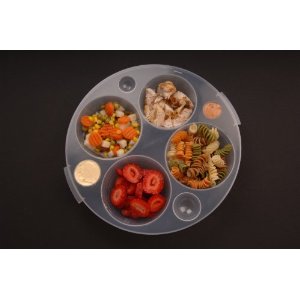It is difficult to know how many calories to eat to lose weight. Naturally people gain weight  as they age even without an increase in calories. If you don’t utilize your muscles they will begin to deteriorate with age. Keep that muscle to help the body burn fat.
as they age even without an increase in calories. If you don’t utilize your muscles they will begin to deteriorate with age. Keep that muscle to help the body burn fat.
As we age we have a tendency to become more inactive. Of course this inactivity and aging of the body causes muscle loss. Muscle loss causes your body to burn fat less efficiently. This is the terrible cycle of aging weight gain. Losing that all important muscle decreases your body’s ability to burn body fat.
“Calories to eat to lose weight” – does it really matter?
Portion control your diet to pinpoint the number of calories you consume. We’ve all heard that so many times, but does it really matter as long as you eat the right food? You don’t have to sit around counting calories all the time, just make yourself aware what foods contain, and it will become a subconscious habit to know the caloric content of your foods. To answer that, yes, portion control does matter.
A sample list of basic portions for some favorites:
- Fresh cut fruit- about the size of a baseball
- Cheese portion- about the size of your index finger
- Whole grain bread- 1 slice
- Pasta- about the size of a tennis ball
- Lean meat or fish- about the size of a deck of cards
- Dark chocolate- limit about 4 pieces or 1 weekly bar
- Salad dressings- about 2 Tbsp. serving
You will get used to the limits after some practice. Our brain begins to adapt to patterns after about 2 weeks of training!
Even as we age we can still rebuild muscle, and teach it to burn fat. Exercise is always essential to rebuild lean muscle, but if you don’t make the effort your body composition will shift to more fat and less muscle. If you don’t change your diet, but continue to do what you’ve always done, you’ll gain more weight as age creeps in.
Body Mass Index calculator is available here.
Click here for more diabetic information about the appropriate number of calories to eat to lose weight:
Try these calorie consumption formulas:
Truthfully, it is less about how many calories we consume, and more about the quality of foods we put into our body. But if you think you must count those calories to maintain your current weight, the caloric intake needed is found by multiplying your weight by 15. For example, a 150 pound person would need approximately 2250 calories to maintain a healthy 150 pounds, keep your muscle and burn fat.
But, if you want to know how many calories to eat to lose weight, multiply your healthy target weight by ten. That same 150 pound person should still consume around 1500 calories and begin to lose weight. You can factor in a slight increase in calories for high impact exercise and physical activity.
Moving the body is the most important thing with aging to prevent weight gain, or to lose weight. Reducing the amounts of calories is important, but burning some with exercise is more important when just getting started. Then, the exercise will reduce cravings and hunger.
Get moving to reduce the health risks involved with the middle age spread. Excess weight increases the risk of high blood pressure, cholesterol, and type 2 diabetes in women and men. Menopausal women especially need to pay attention here. These conditions increase the risk of heart disease and stroke. Excess weight gain can pose a risk of various types of cancer, including colorectal cancer and breast cancer.
To sum it up, age and weight gain naturally go hand in hand. Change of exercise and eating habits can reduce the risks of excess weight gain and unhealthy issues. There are solutions to aging weight gain.The number of calories to eat to lose weight are important, just not as much as you’ve been led to believe. Portions and combination of the right foods may require some adjustments to your usual routines to keep you healthy as you age.
Check back with us often here at our blog for more “Eat to Lose Weight” information from Fat Losing Diet.com.
